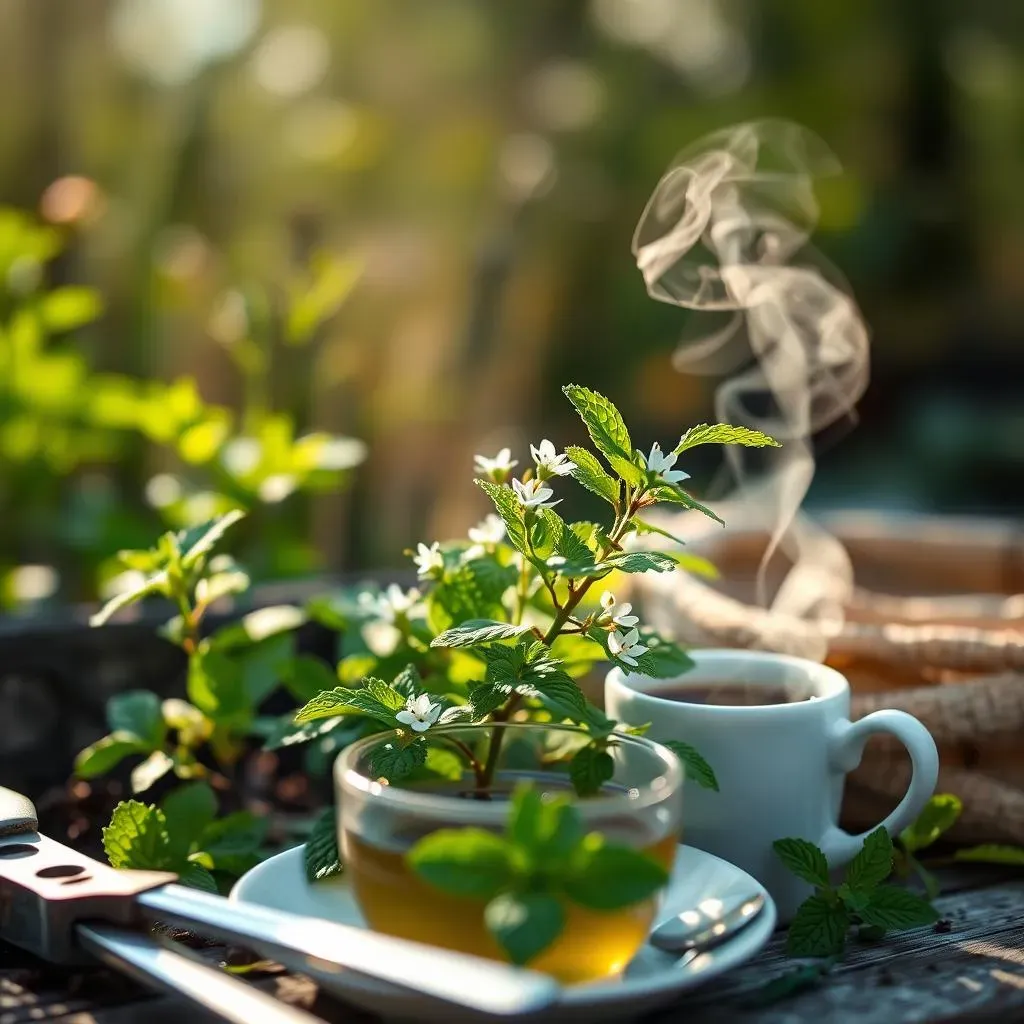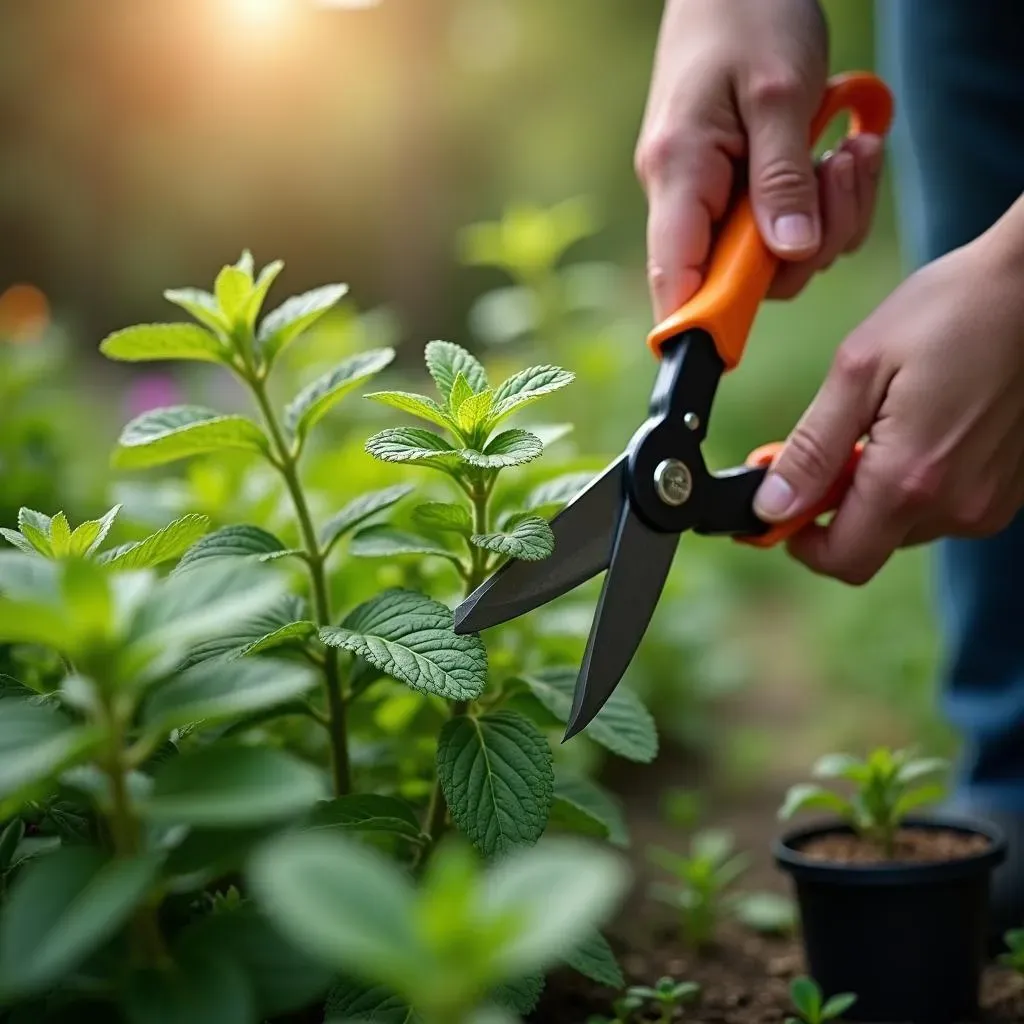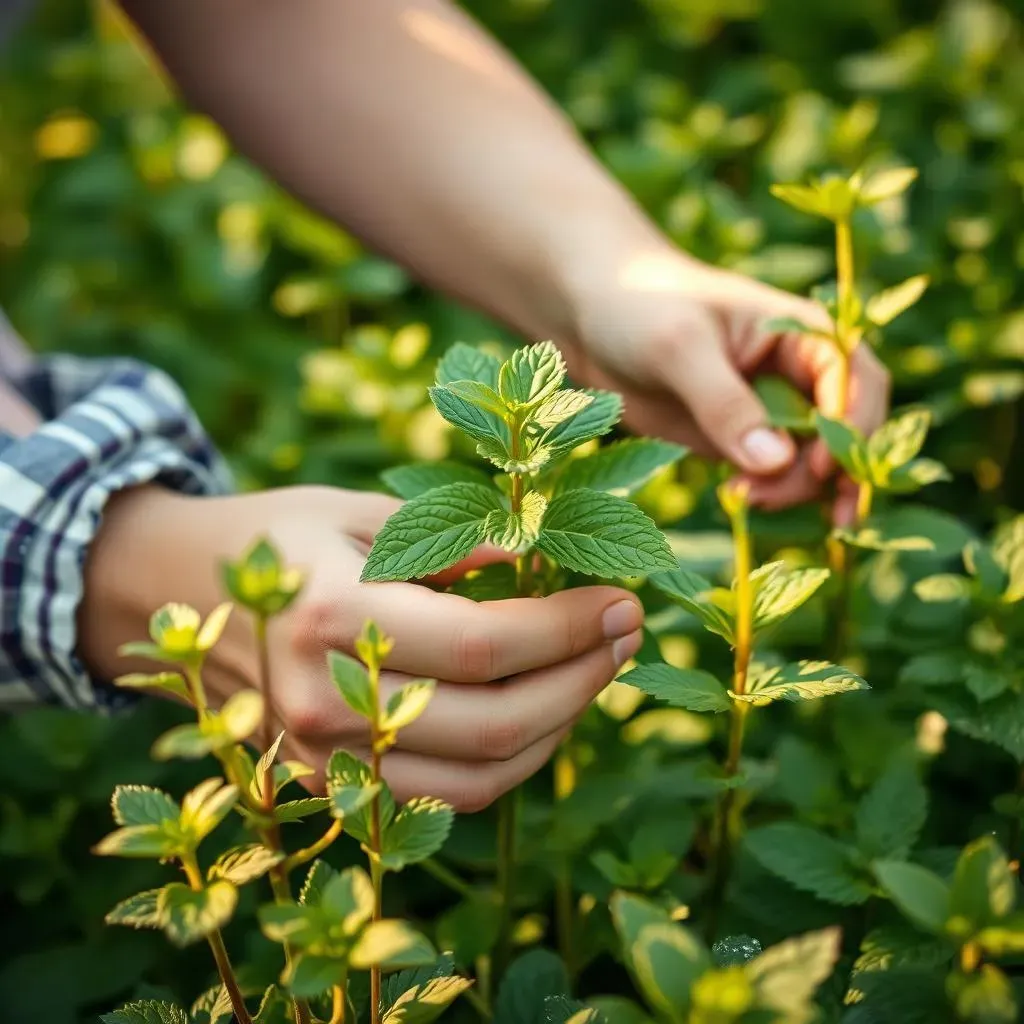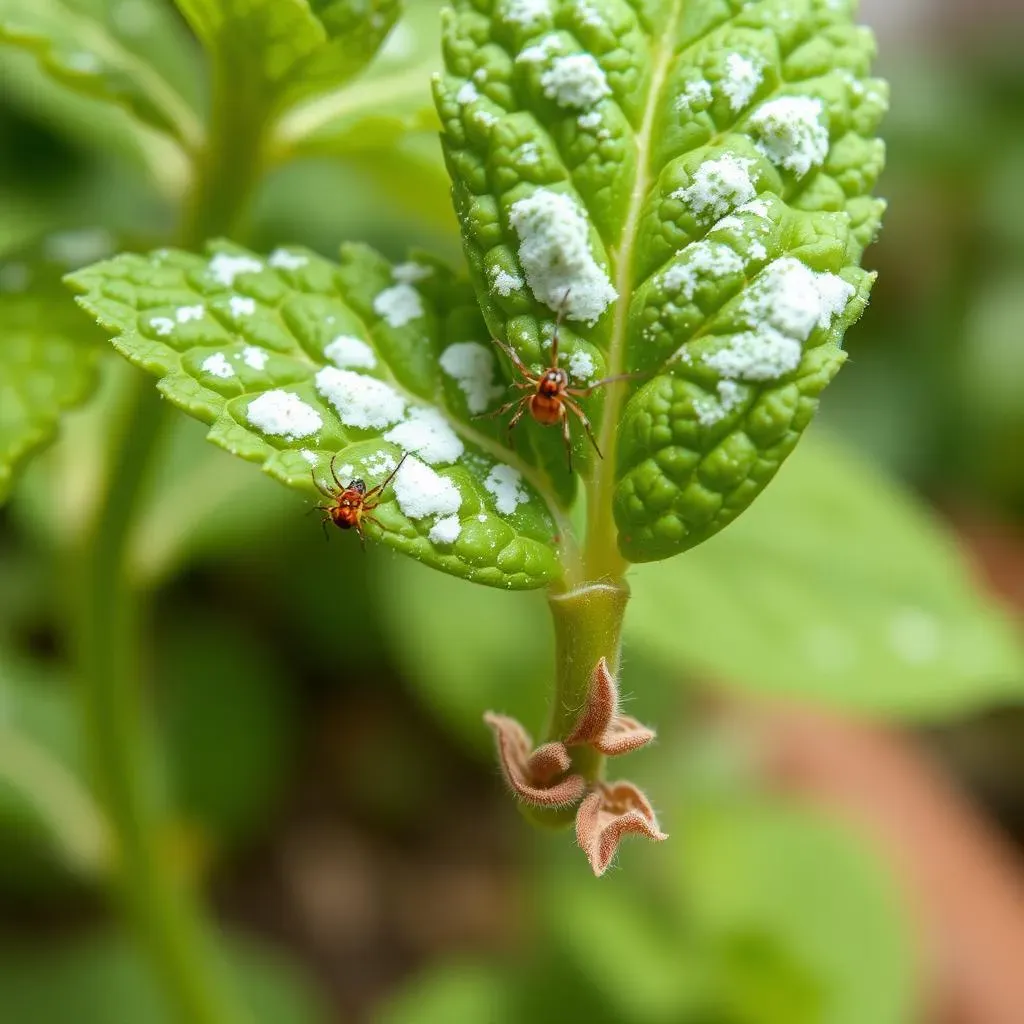Table of Contents
Ready to transform your spearmint tea garden from a sprawling mess into a lush, productive paradise? This article is your complete guide to mastering spearmint tea plant garden pruning techniques. We'll explore the art of pruning, revealing the secrets to maximizing your harvest and ensuring your plants thrive. Forget generic gardening advice; we'll dive into the specifics of spearmint, covering the ideal times to prune, the best methods for different growth stages, and how to troubleshoot common problems. Learn how to prune for optimal leaf production, resulting in the highest quality tea leaves. Discover the difference between a haphazard trim and a strategic prune that encourages healthy growth and abundant yields. Get ready to unlock the full potential of your spearmint plants and elevate your homegrown tea experience. Let's get started!
The Best Time for Spearmint Tea Plant Garden Pruning
The Best Time for Spearmint Tea Plant Garden Pruning
So, you're diving into the world of spearmint tea plant pruning? Fantastic! Timing is everything, my friend. Think of it like this: you wouldn't go fishing without knowing the best time of day, right? Same goes for pruning. Spring, specifically early spring before new growth explodes, is your sweet spot. This is when your spearmint is waking up from its winter slumber, full of energy and ready to branch out. Pruning now encourages bushier growth, leading to more leaves for those delicious tea infusions. You'll get a more compact plant, easier to manage, and less likely to take over your entire garden! Plus, pruning before the plant flowers ensures you’re harvesting those flavorful leaves at their peak. Don't wait until summer; that's when spearmint is already putting all its energy into flowering, and you'll end up with fewer leaves for your tea.
Season | Pruning Focus | Benefits |
|---|---|---|
Early Spring | Shape, encourage branching | Bushier growth, more leaves |
Summer (Light Pruning) | Remove spent flowers, control size | Maintain shape, prevent overgrowth |
Autumn | Minimal pruning | Prepare for winter dormancy |
Beyond the main spring pruning, you can do some light trimming throughout the summer to maintain the shape and prevent it from becoming a rampant monster. Just nip off any flower stalks before they bloom—letting them flower will divert energy away from leaf production. And in autumn, just leave it be; let it rest and prepare for its winter nap. Think of it as a mini-vacation for your plants! Over-pruning at the wrong times can stress the plant, leading to weaker growth and fewer leaves. Remember, patience is a virtue in gardening.
- Early Spring: Main pruning for shape and branching
- Summer: Light pruning to remove spent flowers and control size
- Autumn: Minimal pruning, allow the plant to rest
Essential Spearmint Tea Plant Garden Pruning Techniques
Essential Spearmint Tea Plant Garden Pruning Techniques
Alright, let's get down to the nitty-gritty of actually *pruning* your spearmint. It's less about wielding a chainsaw and more about a gentle, strategic trim. For young, tender stems, simply pinch them off above a leaf node—that's where new growth sprouts from. It's like giving your plant a little haircut, encouraging it to bush out. For thicker, older stems, use sharp pruning shears for a clean cut, preventing damage and disease. Remember, clean cuts are happy cuts! Always sterilize your tools with rubbing alcohol before you begin to prevent the spread of any nasty plant diseases. Think of it as a spa day for your shears – they deserve some TLC too!
- Use your fingers for young, tender stems (pinching).
- Use sharp shears for thicker, older stems (clean cuts).
- Sterilize your tools to prevent disease.
Now, directional pruning is where things get interesting. By pruning above a leaf node facing outwards, you control the plant’s spread and encourage a neat, compact shape. It’s like directing the plant’s growth. Want it bushier? Prune upwards. Want it to spread horizontally? Prune outwards. It’s all about understanding your plant's growth habits. And remember, don't be afraid to experiment! Each plant has its own personality; learn what works best for yours. You'll become a pruning pro in no time.
Stem Type | Pruning Tool | Technique |
|---|---|---|
Young, tender | Fingers (pinching) | Pinch above leaf node |
Thick, older | Sharp shears | Clean cut above leaf node |
Pruning Spearmint for Optimal Tea Leaf Production
Pruning Spearmint for Optimal Tea Leaf Production
Harvesting for the Perfect Cup
So, you've pruned your spearmint beautifully – now what? It's time to harvest those delicious leaves for your tea! The key here is to harvest regularly, encouraging new growth and preventing the plant from becoming woody. The best time to harvest is right before the plant flowers, when the leaves are at their most flavorful and aromatic. Aim for young, tender leaves for the best taste. Remember, you're not stripping the plant bare; just take a portion, leaving enough for continued growth. Think of it like a responsible farmer—harvesting enough to enjoy, but leaving enough for the plant to thrive.
Consider harvesting in the morning after the dew has dried. This allows the leaves to be slightly drier, making them easier to handle and potentially reducing the chances of mildew during drying. You can harvest by simply snipping off the top few inches of stems, or by selectively picking individual leaves. Experiment to see what works best for you and your plants. The goal is to encourage bushy growth, so avoid taking too much from one area.
Harvesting Method | Advantages | Disadvantages |
|---|---|---|
Snipping Stems | Efficient for large harvests | Can be harsher on the plant |
Picking Leaves | Gentle on the plant, selective harvesting | More time-consuming |
Drying and Storing Your Spearmint Treasure
Once you've harvested your spearmint leaves, the next step is drying them to preserve their flavor and aroma. There are several methods you can use, including air drying and oven drying. Air drying is the most gentle method, and it often results in a superior flavor. Simply spread your leaves on a clean, dry surface in a well-ventilated area, away from direct sunlight. Make sure the leaves are not clumped together to allow for proper air circulation. This process typically takes several days.
If you opt for oven drying, use a very low temperature (around 170°F or 77°C) to prevent scorching the leaves. Keep a close eye on them and remove them as soon as they are completely dry and brittle. Once your spearmint is completely dry, store it in an airtight container in a cool, dark, and dry place. Proper storage will help to maintain the quality and flavor of your tea for several months. Remember, freshly harvested spearmint tea is far superior to anything store-bought!
- Air drying: Gentle, preserves flavor (several days)
- Oven drying: Faster, requires low temperature and close monitoring
- Storage: Airtight container, cool, dark, and dry place
Troubleshooting Common Spearmint Tea Plant Garden Pruning Problems
Troubleshooting Common Spearmint Tea Plant Garden Pruning Problems
Dealing with Pests and Diseases
Let's face it: even with the best pruning techniques, your spearmint might encounter some unwelcome guests. Pests like aphids and spider mites can weaken your plants, affecting leaf quality and yield. Regularly inspect your plants for signs of infestation—look for yellowing leaves, sticky residue, or tiny insects on the undersides of leaves. Early detection is crucial! For minor infestations, a strong spray of water can dislodge many pests. For more serious problems, consider using insecticidal soap or neem oil, following the instructions carefully. Remember, these are natural solutions that are less harmful to beneficial insects and the environment.
Diseases like powdery mildew can also affect your spearmint. This fungal disease appears as a white, powdery coating on the leaves. Good air circulation is key to preventing powdery mildew, so ensure your plants aren't overcrowded. If you do find powdery mildew, remove affected leaves and improve air circulation. You might also consider using a fungicide, but always choose one that's safe for use on edible plants. Prevention is always better than cure, so focus on creating a healthy environment for your spearmint to thrive.
Problem | Symptoms | Solution |
|---|---|---|
Aphids | Yellowing leaves, sticky residue | Water spray, insecticidal soap |
Spider mites | Fine webbing, stippled leaves | Neem oil, water spray |
Powdery mildew | White powdery coating on leaves | Improve air circulation, fungicide |
Over-Pruning and Leggy Growth
Sometimes, well-intentioned pruning can backfire. Over-pruning can stress your spearmint, leading to weaker growth and fewer leaves. It's like over-exercising—too much of a good thing can be detrimental. If your spearmint seems weak or leggy, it might be a sign you've pruned too aggressively. Give it time to recover, focusing on providing adequate water and nutrients. Light pruning throughout the growing season is generally better than one harsh trim. Remember, patience is key!
Leggy growth, where the stems become long and spindly with sparse leaves, often indicates insufficient sunlight. Make sure your spearmint plants are receiving at least six hours of sunlight per day. If you're growing them in containers, consider moving them to a sunnier location. You might also need to thin out the plants to improve air circulation and allow more light to reach all the leaves. Remember, healthy growth starts with the right environment.
- Avoid over-pruning: Light, regular trims are better than one harsh cut.
- Ensure adequate sunlight: At least 6 hours per day.
- Improve air circulation: Thin out overcrowded plants.